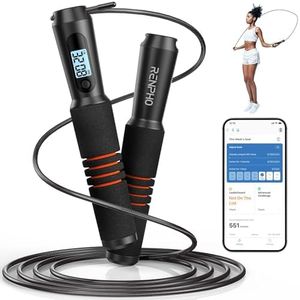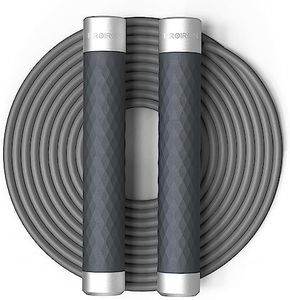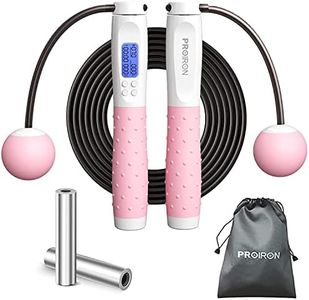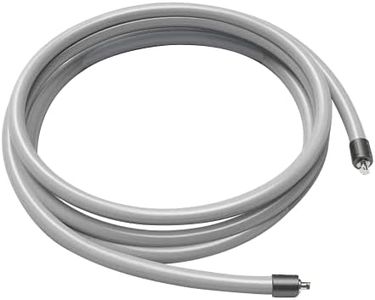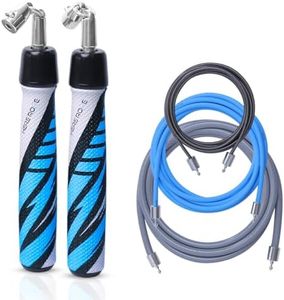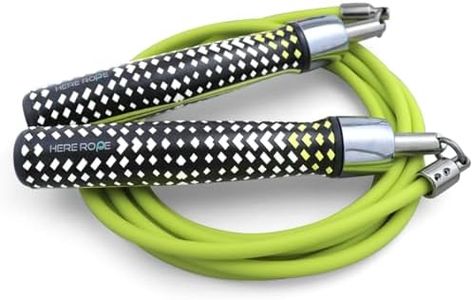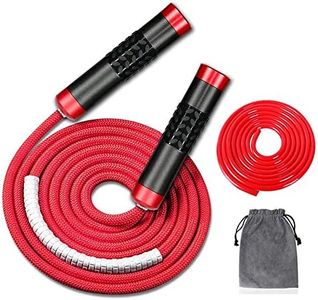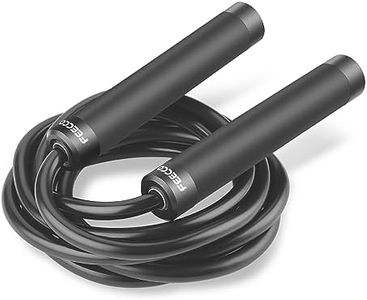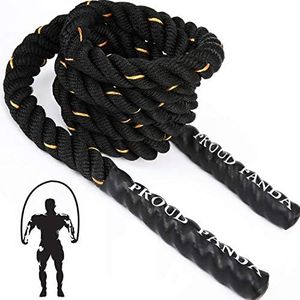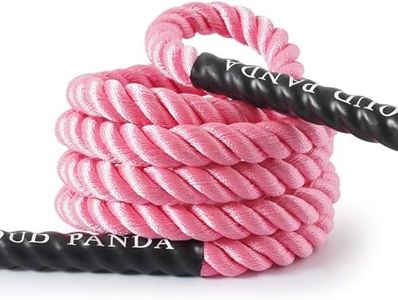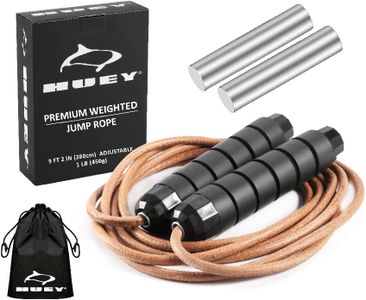We Use CookiesWe use cookies to enhance the security, performance,
functionality and for analytical and promotional activities. By continuing to browse this site you
are agreeing to our privacy policy
10 Best Weighted Jump Ropes
From leading brands and best sellers available on the web.Buying Guide for the Best Weighted Jump Ropes
Weighted jump ropes are a fantastic addition to any fitness routine, offering an effective way to boost cardiovascular health, improve coordination, and build muscle endurance. The extra weight adds resistance, making your workout more challenging and helping you burn more calories. Choosing the right weighted jump rope can make a significant difference in your workout results and overall satisfaction. It's important to consider a few key features that affect performance, comfort, and safety, so you find a rope that matches your fitness level and workout goals.Rope WeightRope weight refers to the heaviness of the rope itself, typically ranging from light (a few ounces) to heavy (up to several pounds). Lighter ropes are easier to swing and allow for faster skipping, making them suitable for beginners or those focusing on speed and agility. Heavier ropes provide more resistance, engaging more muscle groups in your arms, shoulders, and core, and are ideal for strength training and building endurance. To pick the right weight for you, consider your fitness level and goals: if you’re new to jump rope workouts or focused on cardio, start lighter; if you want to build strength or challenge yourself, try a heavier option.
Handle DesignThe design of the handles affects grip comfort, control, and the efficiency of your skipping motion. Handles can vary in thickness, length, grip material, and shape. Thinner and shorter handles allow for quick wrist movements and are often preferred for faster routines, while thicker, longer handles might give you a more secure grip, which is helpful when using heavier ropes. Some handles offer ergonomic shapes or cushion grips for added comfort. Choosing the right handle depends on your hand size, workout duration, and whether you prioritize speed or strength.
Rope LengthThe length of the jump rope should match your height for safe and effective use. A rope too short can trip you up, while a rope too long can slow you down. You can find ropes in fixed lengths or adjustable designs. To check for the right length, step in the center of the rope and pull the handles up; the ends should reach approximately to your armpits. Taller users need longer ropes, and shorter users need shorter ones. Adjustable ropes are flexible if you want to share with others or change your workout style.
Rope MaterialWeighted jump ropes can be made from materials like PVC, leather, braided cotton, or metal cables coated with plastic. The material affects the rope's durability, speed, and how it feels during use. PVC and coated cables are durable and provide a smooth, fast swing, great for indoor use and speed workouts. Leather or braided ropes may swing slower but are gentle on surfaces and hands, providing a traditional feel. Consider where you'll mostly use the rope (indoor or outdoor), how much wear and tear it might face, and your personal comfort preference.
Rotation MechanismThe mechanism that allows the rope to rotate at the handles, such as ball bearings, can impact how smoothly the rope spins. High-quality rotation systems help prevent the rope from tangling and provide a more consistent and efficient workout. Simple plastic or metal pivots are found in basic models, while ball bearing systems deliver the smoothest performance, especially when speed or continuous motion is important. If you plan to do high-intensity or double-unders, a smooth-rotating handle will make a big difference. For casual or occasional use, a basic mechanism may suffice.
